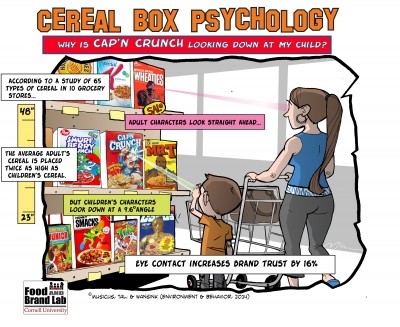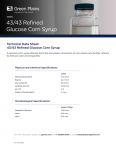CFBAI kids’ cereals: Out with the bad, in with the good

CFBAI’s ‘2012 Cereals Snapshot’ report indicated clear efforts by General Mills, The Kellogg Company and Post Foods in nutritionally enhancing products aimed at children and slashing sugar and sodium content.
“Both nutrient fortification and sodium and sugar reduction are important for the companies,” Elaine Kolish, director of CFBAI, told BakeryandSnacks.com.
“Implementation does vary from company to company. Some are opting to enrich products with whole grains, for example, and reduce sugar content after, for other’s it is the opposite,” Kolish said.
While cereal firms are investing efforts in both, she noted there are limits in reductions.
“There will be a limit to the amount of sugar and salt reductions a company can make to allow a palatable product,” she said.
“For these formulation changes, we don’t know where the limits are yet. Food science in this area is ongoing,” she added.
Responsive moves, not yet perfect
The CFBAI, set up in 2006, is a voluntary self-regulation program supported by major food and beverage companies. It is designed to “shift the mix of foods advertised to children under 12 to encourage healthier dietary choices and healthy lifestyles”, according to its site.
“I think cereals marketed to children is a category that participants have worked hard at,” Kolish said.
A June 2012 report from the Yale Rudd Center for Food Policy and Obesity found that the nutritional content of cereals had improved by an average of 10% since its last examination in 2009, however those marketed directly to children still had 57% more sugar, 52% less fiber, and 50% more sodium than adult-targeted cereals.
“It is not perfect yet; there is still room for improvements but we have seen steady changes,” CFBAI’s director acknowledged.
Nutrients, sugar and sodium
The Snapshot report indicated that 71% of kids’ cereals in the initiative contain at least eight grams of whole grains equivalent to a half serving. For more than a third, whole grain is the dominant ingredient.
All its participants’ cereals also contain 10-19% of the government-established Daily Value of calcium, fiber, potassium and vitamin D; nutrients identified as ‘of concern’ in the 2010 Dietary Guidelines for Americans. Other nutrients contained in cereal products include vitamin C and D and iron.
More than half (57%) of cereals in the initiative contain five or more of these nutrients and “all are at least a good source of two of the seven specific nutrients”, CFBAI said in its report.
Participants have steadily reduced sugars and 71% of the cereals now contain less than 10 grams per serving and 33% have no more than 9g.
All the cereals contain less than 190 milligrams of sodium.
Earlier this month, Cereal Partners Worldwide announced a reformulation plan for 20 of its Nestlé cereals, pledging to slash sugar content to 9g or less per serving and sodium 135mg or less. (See HERE)
A lot of these formulation alterations, especially in cereals marketed to children, will be stealth changes, Kolish said.
“You’re not going to hear about it in kids’ adverts. Companies may wish to communicate efforts to parents though, although small changes won’t be heralded,” she said.

















